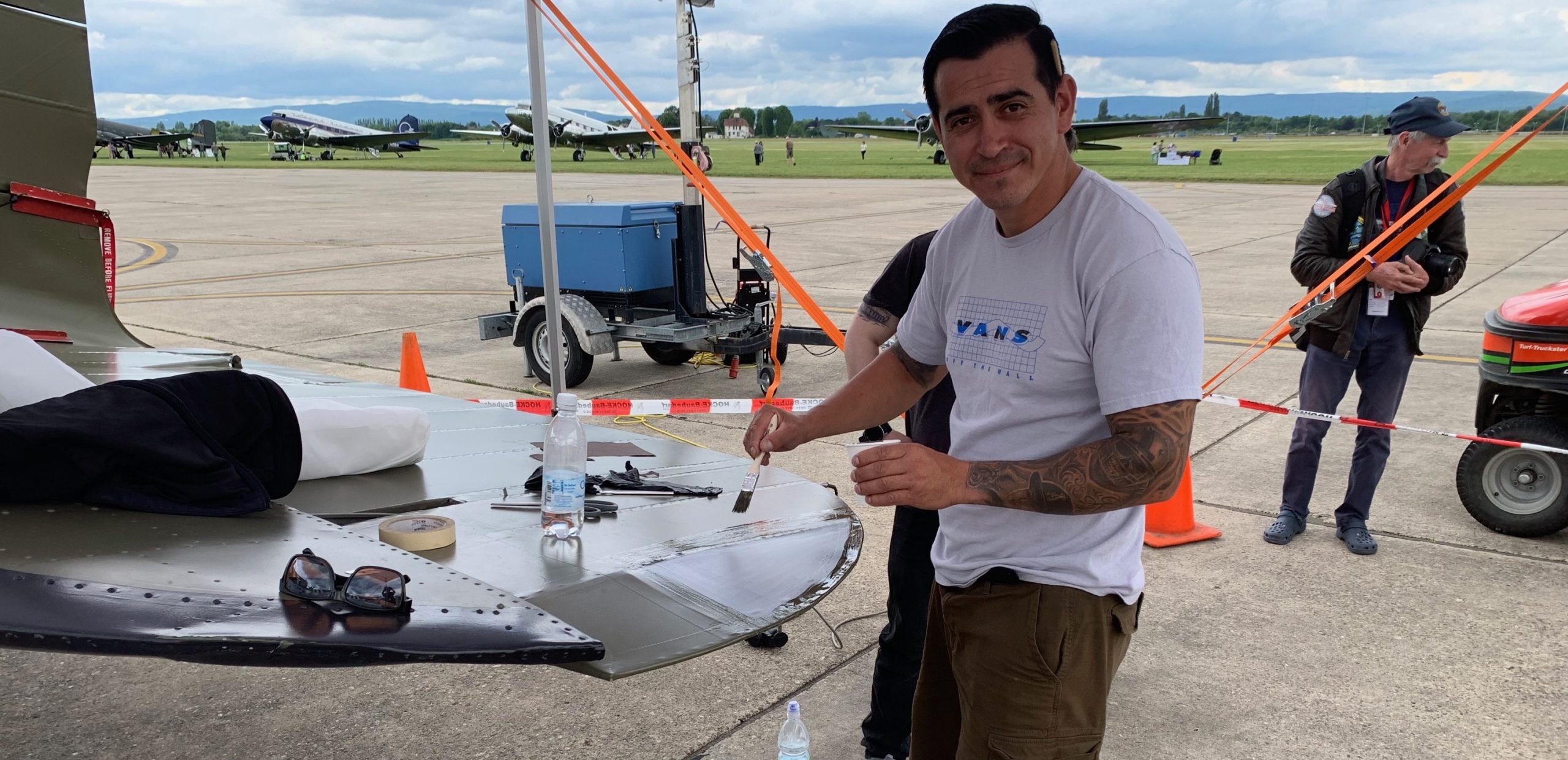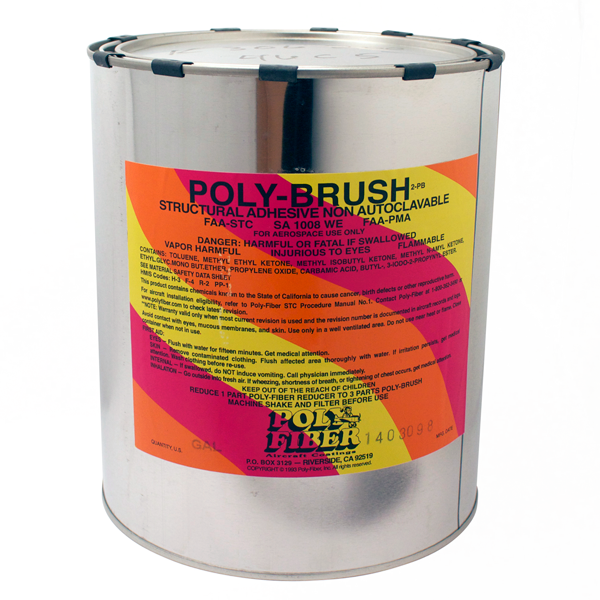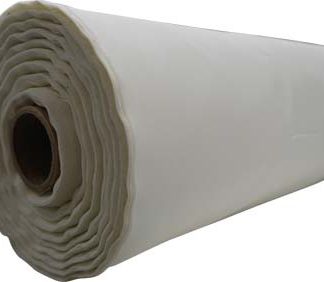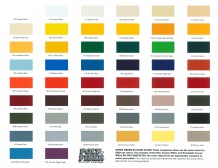Description
Why should I use Poly-Fiber?
Poly-Fiber is the only all-VINYL system on the market today. As it dries, it bonds extremely well to today’s polyester fabrics and remains flexible.
How many steps are there?
There are six basic steps:
Glue on the fabric with our Poly-Tak fabric cement; tighten it with the heat of a calibrated clothing iron.
Brush on a coat of Poly-Brush fabric sealer.
Riblace, then apply gussets and finishing tapes with more Poly-Brush.
Spray on two more coats of Poly-Brush.
Spray on three cross coats of silver Poly-Spray to block ultraviolet radiation.
Spray on three coats of top coat paint, either Poly-Tone, Aero-thane or Ranthane.
How long does fabric covering last? I heard you have to recover every few years.
This business about recovering every few years comes from the old days of covering with cotton and linen. That’s ancient history. Today, all covering is done with heat-shrunk polyester fabric. With proper application, today’s fabric systems last 20 to 30 years, even outdoors.
I’m confused about the different systems. Please summarize them.
There are really only three basic systems, and they all start with heat-shrunk fabri: CECONITE (Ceconite is a fabric brand), applied with nitrate and butyrate dope. Randolph dopes are used on Ceconite. Dope is easy to repair and has been around since aviation began. POLYURETHANE. These are two-part polyurethane systems using automotive coatings with flex agents added to reduce cracking of the dried paint. Major brands are Superflite VI and Air Tech. Their finishes are high gloss, but are hard to repair and must be sprayed with the precaution: urethane spray mist is very toxic. POLY-FIBER. The “Stits” system, using Poly-Fiber fabric and all-vinyl coatings. Our vinyl coatings do not support combustion.
How do I learn?
Get a copy of the Poly-Fiber manual. There are 151 pages of easy-to-follow instructions on basic covering. Over the past 50 years, thousands of aircraft have been covered by following this manual.
When Cubs rolled off the line, they had 75 pounds of Grade A cotton and dope on them. A Ceconite and dope finish on that same Cub will probably weigh about 50 to 60 pounds. A Cub done in Poly-Fiber has 40 to 45 pounds of finish weight. A Cub done in urethane can get pretty heavy if you lay on the thick coats. Urethane is not known for its light weight. Ultralights can be done in as little as 12 to 15 pounds.
How long will it take a first-timer to cover an airplane?
If you have the luxury of working on it eight hours a day, you can finish in a month or so. Of course, this all depends on your work habits, speed, and expectations. Most people do it during a winter season of weekends and evenings.
Can I mix products from the different systems?
We don’t recommend it. Pick a system and stay with it, even on experimental airplanes. Mixing and experimenting can result in disasters of all sorts. Unless you have a degree in organic chemistry, a full lab, and the time to test your experiments, we recommend you stay conservative. Remember, you’re going to ride in this airplane.
Do I have to rib lace? My kit manufacturer says it’s not necessary.
Lift acts like a giant vacuum cleaner, exerting a peeling force on the top of your wing. You have to do something to hold your fabric on other than just gluing it. Pop rivets, screws, clips, and rib lacing are designed to secure fabric for long service lives. Rib lacing is kindest to the rib structures, and it’s really pretty easy to learn. It takes only about five hours to lace a wing. This is great insurance and it costs very little. Yes Virginia, you have to rib lace. But it is really a piece of cake to do. Glue alone does not hack it.
I want a really shiny finish. Can I use my iron or my favorite auto paint?
Revision 20, July 2001, of the Poly-Fiber Procedure Manual No. 1 allowed only Poly-Tone or Aero-Thane topcoat paint over the fabric-covered components of certified aircraft. This was a major change to the STC. Use of any other topcoat paint over fabric will void the STC. The old rule that the STC was valid only “up to the silver” and that any available topcoat paint could be used has changed. The increasing use of brittle automotive polyurethane paints over the years has caused enough cracking and delamination to cause the FAA to rethink approving untested topcoat paint over fabric. Failed topcoat paints expose polyester fabric to sunlight and UV damage. Poly-Tone and Aero-Thane have long service records over fabric as well as established test data on file with the FAA. Additionally, both paints have an FAA Parts Manufacturing Authority (PMA) which allows their application on certified aircraft. This has no effect on the non-fabric components. For instance, a J-3 Cub must have only Poly-tone or Aero-Thane over the fabric parts, but you could use enamel or anything else over the metal struts, cowls, doors, etc. They key word is FABRIC. Experimental aircraft are not bound by these changes; however, we do recommend using products with a known track record on fabric. Revision 21, September 2006, of the Poly-Fiber Procedure Manual No. 1, added Randollph Ranthane HS Polyurethane as a topcoat option on the Poly-Fiber STC.





